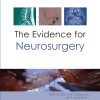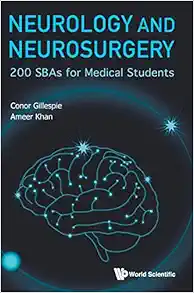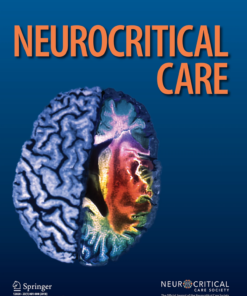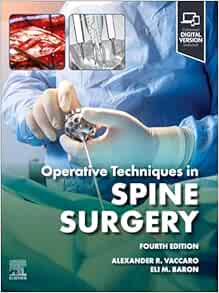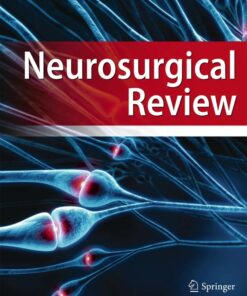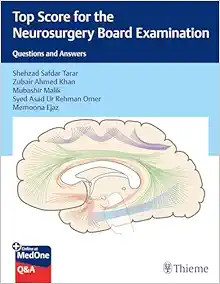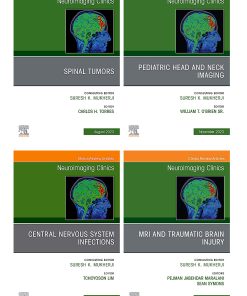UCSF Neuro and Musculoskeletal Imaging 2022
$85
Format : 35 Videos + 2 PDFs
File Size : 6.68 GB
UCSF Neuro and Musculoskeletal Imaging 2022
Introducing the UCSF Neuro and Musculoskeletal Imaging Online CME Course – the resource that will take your radiology practice to the next level. Clinically relevant and up-to-date, this comprehensive course covers neuroradiology and musculoskeletal imaging, with optimized protocols discussed for 1.5T and 3T MR. The faculty reviews indications commonly seen in general practice, along with updates to improve image acquisition and interpretation strategies.
This radiology continuing medical education course covers a wide range of topics, including imaging overview of neuroradiological emergencies, head and neck tumor staging, and advanced imaging techniques such as MR neurography, fMRI, and DTI. The course also covers major joints, an introduction to musculoskeletal ultrasound, and bone marrow and tumors, among other topics.
With learning objectives that aim to help the participant recommend CT/MR protocols for brain, head and neck, spine, nerve, and musculoskeletal imaging, recognize specific imaging features of infection, trauma, tumors, and inflammatory disorders in the head and spine, distinguish between normal anatomy and common anatomic variants, and develop strategies for evaluating common and uncommon abnormalities in the brain and spine. The course also teaches participants to understand advanced neuroimaging techniques, including fMRI, DTI, and MR neurography, and to implement utilization of diagnostic musculoskeletal ultrasound, ultrasound-guided musculoskeletal procedures, and common joint injections.
This course is intended for radiologists and other medical professionals who need to increase their understanding of neuro and musculoskeletal imaging methods, interpretation, and diagnosis. If you’re looking for an all-inclusive resource that will enhance your radiology practice, the UCSF Neuro and Musculoskeletal Imaging Online CME Course is the perfect choice.
Now let’s take a closer look at the course’s speakers and their topics. The course includes a range of topics, from musculoskeletal and neuro to neuro alone. The speakers include Christine M. Glastonbury, MBBS, Matthew D. Bucknor, MD, Kevin C. McGill, MD, MPH, Ramya Srinivasan, MD, Lynne S. Steinbach, MD, Vinil N. Shah, MD, and Leo P. Sugrue, MD, PhD. Each speaker delves into their respective field, teaching participants all they need to know about the latest advancements in radiology.
The topics covered in the course range from osseous infectious dilemmas, bone marrow and tumors, practical cervical and lumbar plexus imaging, and neuroradiology emergencies, to name a few. The speakers aim to give participants a comprehensive understanding of neuro and musculoskeletal imaging, covering everything from imaging overviews and advanced techniques to the recognition of specific imaging features by outlining the differences between normal anatomy and common anatomic variants and finding the right imaging techniques for each patient.
The course is also designed to be user-friendly and interactive, offering a rich learning experience that participants can complete at their own pace. The course materials include videos, lectures, and practical case studies. The online interface is easy to use, making it simple for participants to navigate and access materials.
In conclusion, the UCSF Neuro and Musculoskeletal Imaging Online CME Course is an all-in-one resource that every radiologist should have. This course promises to enhance your radiology practice by providing clinically relevant, up-to-date information, and giving participants the ability to recommend CT/MR protocols, diagnose specific imaging features, and develop strategies for evaluating abnormalities. The speakers in the course are experts in their fields and are sure to provide participants with a comprehensive understanding of all things neuro and musculoskeletal imaging. Order the course today and take your radiology practice to the next level!
Product Details
- Imaging overview of neuroradiological emergencies
- Head & neck tumor staging
- Advanced imaging techniques (MR neurography, fMRI, DTI)
- Major joints
- Introduction to musculoskeletal ultrasound
- Bone marrow and tumors
- And more…
- Recommend CT/MR protocols for brain, head & neck, spine, nerve and musculoskeletal imaging
- Recognize specific imaging features of infection, trauma, tumors, and inflammatory disorders in the head & spine, and communicate key findings enabling rapid pathological classification
- Distinguish between normal anatomy, common anatomic variants and pathological disorders of the major musculoskeletal joints, brain, head & neck and spine as evaluated on MRI
- Recognize internal derangement and post-operative appearances of the shoulder, elbow, wrist, hip, knee, ankle and foot
- Implement utilization of diagnostic musculoskeletal ultrasound, ultrasound-guided musculoskeletal procedures and common joint injections; Identify important imaging characteristics of infection, bone and soft-tissue tumors
- Understand advanced neuroimaging techniques including fMRI, DTI, and MR neurography
- Develop strategies for evaluating common and uncommon abnormalities in the brain and spine
Related Products
Neurosurgery books PDF
Neurology and Neurosurgery: 200 Sbas for Medical Students (Original PDF from Publisher)
Neurosurgery books PDF
Handbook of Spine Surgery, 3rd Edition + Videos (Original PDF from Publisher)
Neurosurgery books PDF
Spinal Deformities: The Comprehensive Text, 2nd edition (Original PDF from Publisher+Videos)
Neurosurgery books PDF
Journal of Neurosurgical Anesthesiology 2024 Full Archives (True PDF)
Neurosurgery books PDF
Neurosurgery books PDF
Neurosurgery books PDF
Operative Techniques: Spine Surgery, 4th edition (Original PDF from Publisher)
Neurosurgery books PDF
Neurosurgery books PDF
Anterior Controllable Antedisplacement and Fusion: Technique in Spinal Surgery (EPUB)
Neurosurgery books PDF
Neurosurgery books PDF
Neurosurgery books PDF
Neurosurgery books PDF
Neurosurgery books PDF
Biomechanics of Spine Stabilization: Self-Assessment and Review (Original PDF from Publisher)
Neurosurgery books PDF
Neurosurgery books PDF
Neurosurgery books PDF
Lyftogt Perineural Injection Treatment: How to Treat Peripheral Nerve Pain
Neurosurgery books PDF
Neurosurgery books PDF
Spinal Deformities: The Comprehensive Text 2nd Edition PDF & VIDEO
Neurosurgery books PDF
Neurosurgery books PDF
Neurosurgery books PDF
Journal Of Neurosurgery Pediatrics 2023 Full Archives (True PDF)
Neurosurgery books PDF
Journal Of NeuroInterventional Surgery 2023 Full Archives (True PDF)
Neurosurgery books PDF
External Ventricular And Lumbar Drains: Indications, Procedures, And Patient Care (EPUB)
Neurosurgery books PDF
Journal Of Neurosurgical Anesthesiology 2023 Full Archives (True PDF)
Neurosurgery books PDF
Neuroimaging Clinics Of North America 2023 Full Archives (True PDF)
Neurosurgery books PDF
Neuroimaging Clinics Of North America 2022 Full Archives (True PDF)
Neurosurgery books PDF
Neurosurgery Clinics Of North America 2023 Full Archives (True PDF)
Neurosurgery books PDF
Neurosurgery Clinics Of North America 2022 Full Archives (True PDF)
Neurosurgery books PDF
An Inner Approach To Cranial Osteopathy (Original PDF From Publisher)
Neurosurgery books PDF
Neurosurgery books PDF
Neurosurgery books PDF
Neurosurgery books PDF
Neurosurgery books PDF
Neurosurgery books PDF
Neurosurgery books PDF
Manual De Neurocirugia (2 Volumenes, 9ª Edicion) (High Quality Image PDF)
Neurosurgery books PDF
Neurosurgery books PDF
Neurosurgery books PDF
Neurosurgery books PDF
Intracranial Arteriovenous Malformations: Essentials for Patients and Practitioners
Neurosurgery books PDF
Neuro-Oncology Compendium for the Boards and Clinical Practice
Neurosurgery books PDF
Skull Base Reconstruction: Management of Cerebrospinal Fluid Leaks and Skull Base Defects
Neurosurgery books PDF
Neurosurgery books PDF
Neurosurgery books PDF
Neurosurgery books PDF
Master Techniques in Orthopaedic Surgery: The Spine, 4th Edition
Neurosurgery books PDF
Ultrasonography of the Prenatal Brain, Third Edition Original PDF
Neurosurgery books PDF
Neurosurgery books PDF
Neurosurgery books PDF
Neurosurgery books PDF
Neurosurgery books PDF
Neurosurgery books PDF
Neurosurgery books PDF
Surgery of the Cerebellopontine Angle, 2nd Edition (Original PDF from Publisher)
Neurosurgery books PDF
Surgical Nuances of Head Injury (Original PDF from Publisher)
Neurosurgery books PDF
Neurosurgery Updates Critical Care for Neurosurgeons Volume 3 (Original PDF from Publisher)
Neurosurgery books PDF
ASSI Operation Theater Manual for Spine Surgery (Original PDF from Publisher)
Neurosurgery books PDF
Journal of Neurosurgery: Spine 2022 Full Archives (True PDF)
Neurosurgery books PDF
Journal of Neurosurgery: Pediatrics 2022 Full Archives (True PDF)
Neurosurgery books PDF
Manual de Neurocirurgia, 8th Edition (Original PDF from Publisher)
Neurosurgery books PDF
The Comprehensive Neurosurgery Board Preparation Book: Illustrated Questions and Answers (EPUB)
Neurosurgery books PDF
Neurosurgical Operative Atlas: Spine and Peripheral Nerves, 3rd Edition (EPUB)
HEAD AND NECK SURGERY & OTOLARYNGOLOGY
Atlas of Facial Nerve Surgeries and Reanimation Procedures Original PDF
Neurosurgery books PDF
Neurosurgery books PDF
Carotid Treatment: Principles and Techniques, 3rd Edition 2023 Original PDF
Neurosurgery books PDF
Condutas em Neurocirurgia: Fundamentos Práticos – Crânio (EPUB)
Neurosurgery books PDF
Neurosurgery books PDF
Neurosurgery books PDF
Transnasal Endoscopic Skull Base and Brain Surgery: Surgical Anatomy and its Applications (EPUB)
Neurosurgery books PDF
Surgery of the Thoracic Spine: Principles and Techniques (EPUB)
Neurosurgery books PDF
Meningiomas of the Skull Base: Treatment Nuances in Contemporary Neurosurgery (EPUB)
Neurosurgery books PDF
Cirurgia Endoscópica da Coluna Vertebral, 2nd Edition (Original PDF from Publisher)



